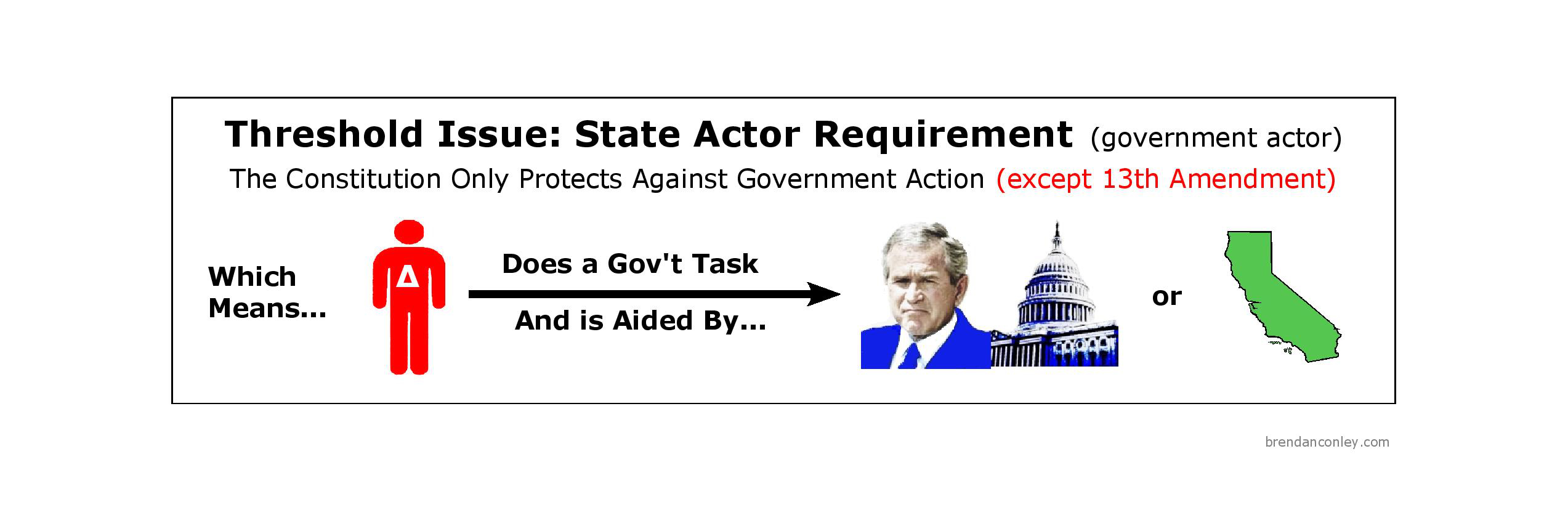
This diagram is a “big picture” flowchart for analyzing Constitutional law issues. These can be printed out on 11 x 17″ sheets of paper. We start with the threshold issue of whether there is a state (government) actor. The Constitution only protects against government action, with the exception of the Thirteenth Amendment prohibition on slavery.
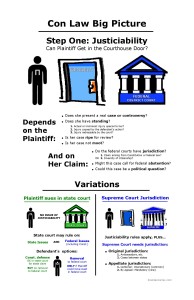
After the threshold issue, we begin with Step One: Justiciability. Can the plaintiff get in the courthouse door? This depends on several considerations. The plaintiff must present a real case or controversy and must have standing. The case must be ripe for review and not moot. The federal courts must have jurisdiction, the case must not be one that calls for federal abstention, and must not concern a “political question.”
When a plaintiff sues in state court, the rules for justiciability do not apply, and a state court may rule on both state law and federal law, including Constitutional issues. A defendant may remove the case to federal court only if the plaintiff could have sued in federal court. For the U.S. Supreme Court, the rules of justiciability apply, and the Supreme Court must have original jurisdiction, or jurisdiction by certiorari or by appeal.
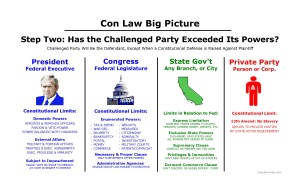
In Step Two, we consider whether the challenged party has exceeded its powers. This depends on whether the challenged party is the federal executive, federal legislature, a state government or branch thereof, or a private party.
In Step Three we examine individual rights and the Constitutional sources of protection of those rights.
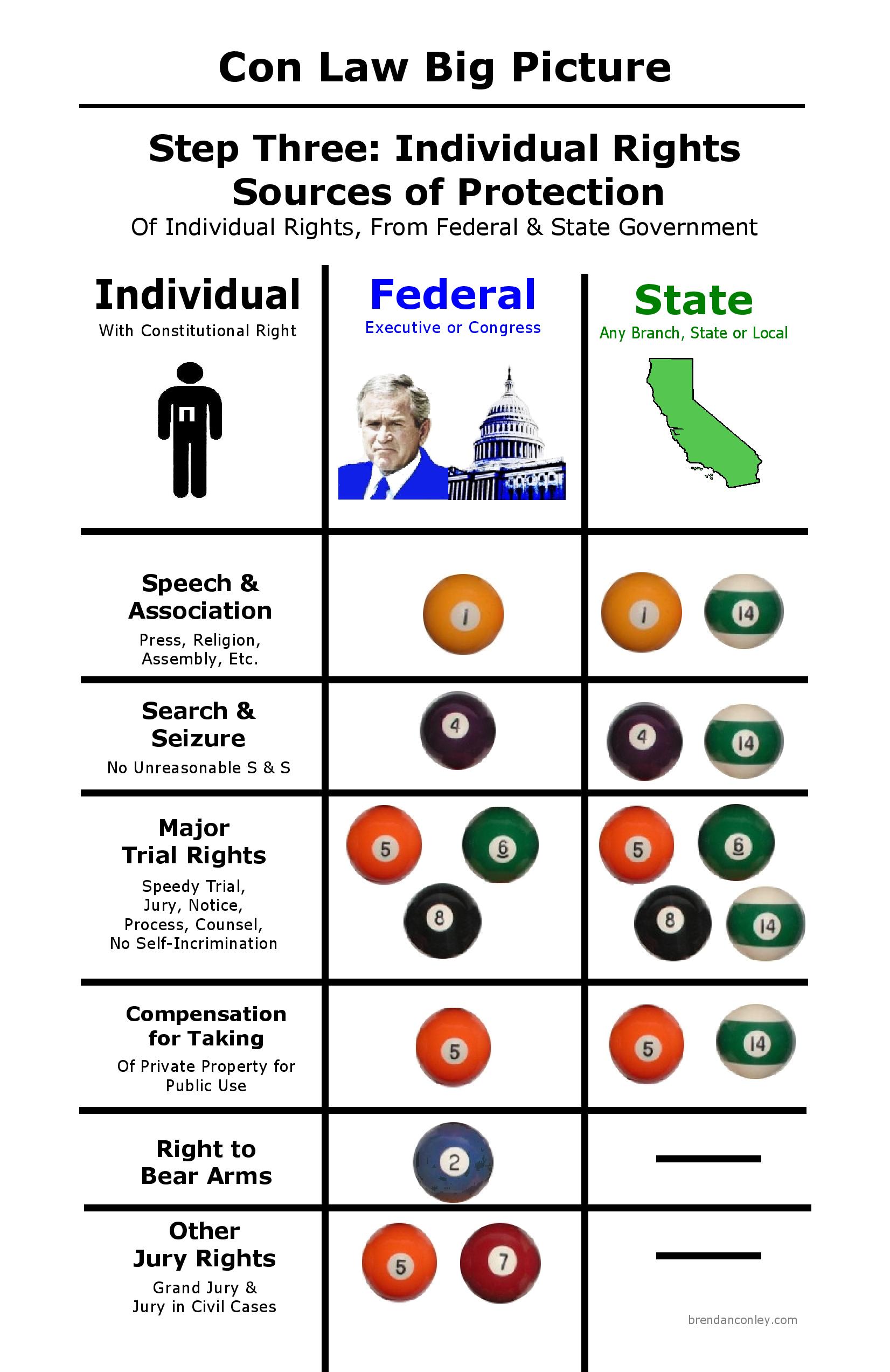
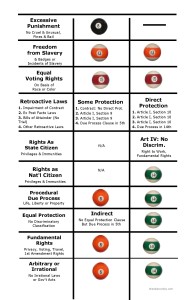
Constitutional Law Threshold Issue State Actor Requirement pdf
Constitutional Law Step One Justiciability pdf
Constitutional Law Step Two Powers of Challenged Party pdf
Constitutional Law Step Three Individual Rights pdf
Bill of Rights and Reconstruction Amendments pdf

Credit/link to brendanconley.com.
Dear Mr. Conley,
I love you.
Sincerely,
3L studying for bar exam
❤
same here, thank you for the study aids.